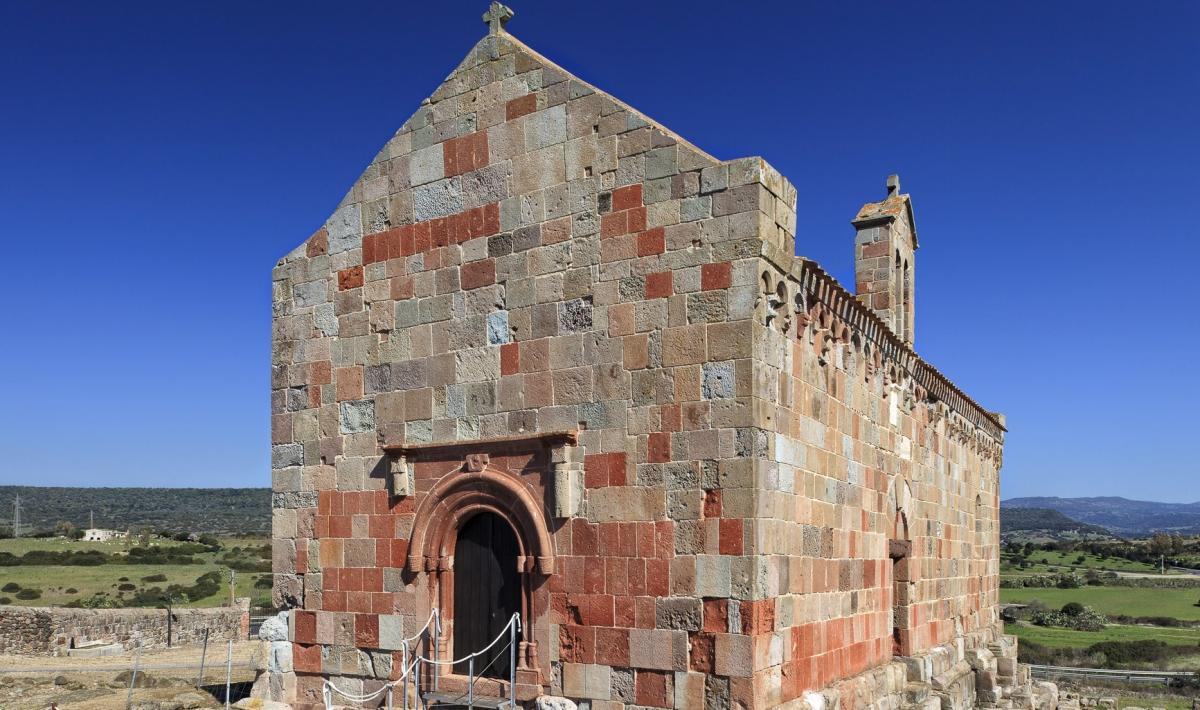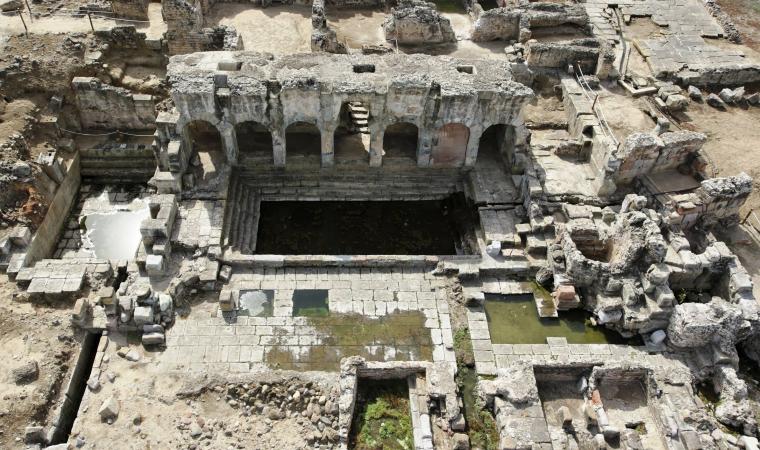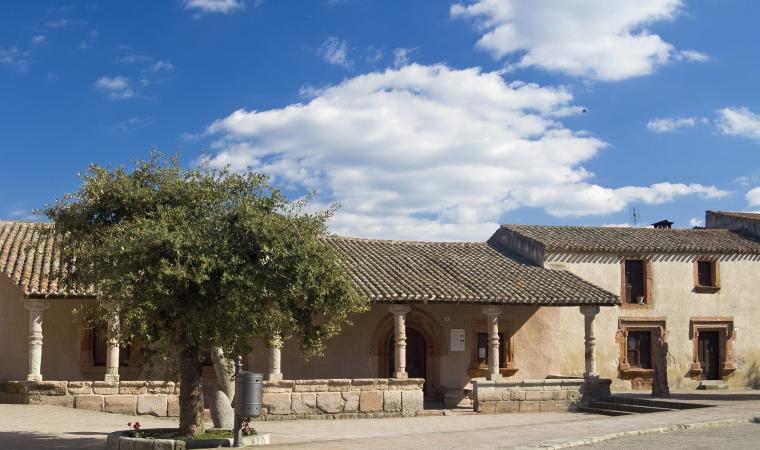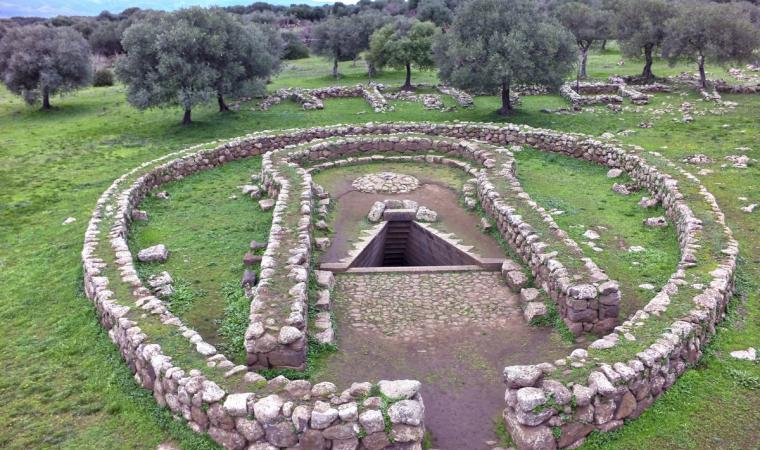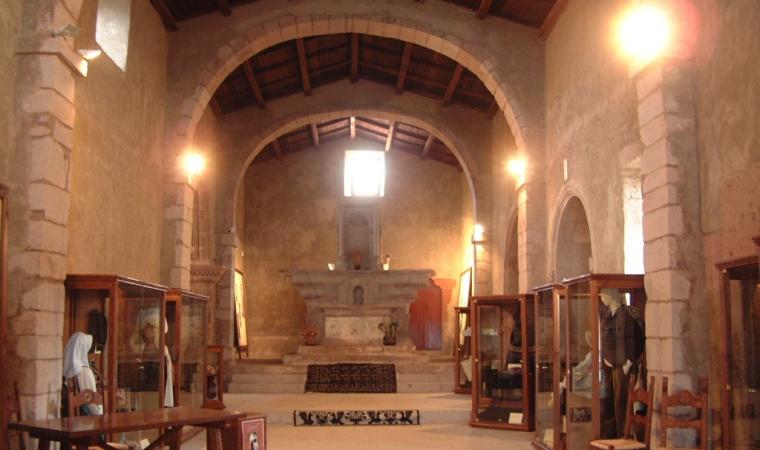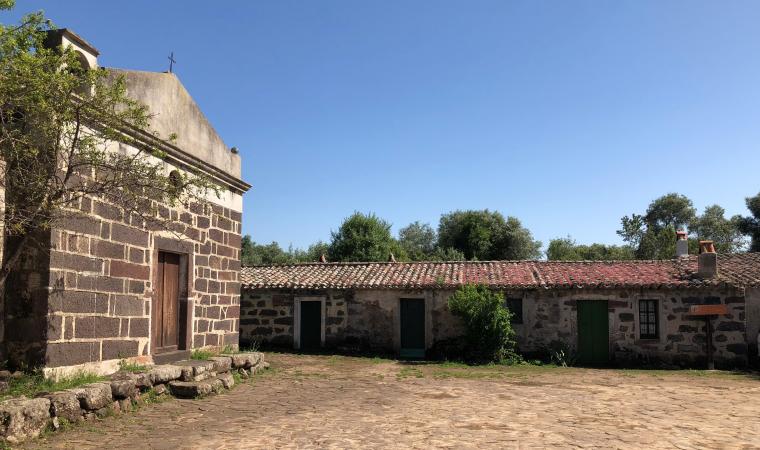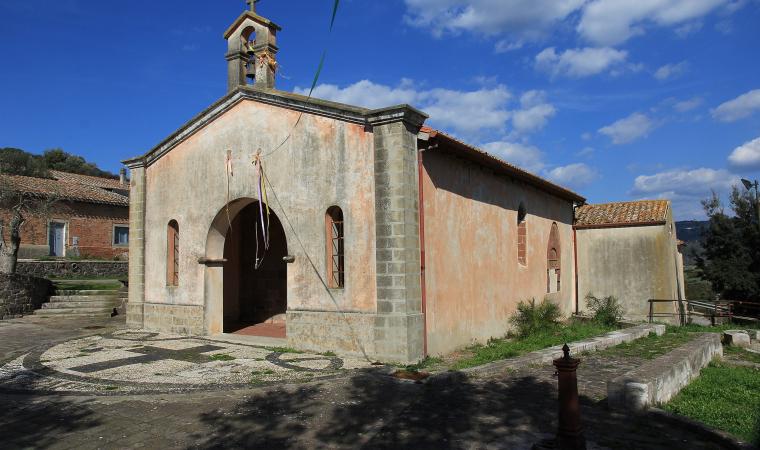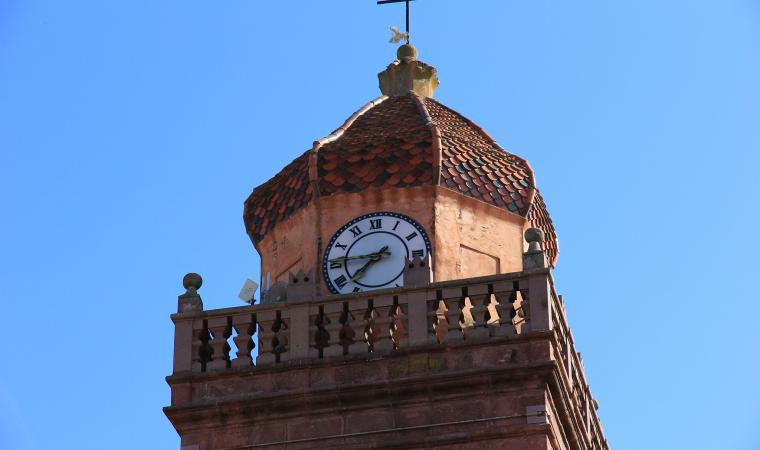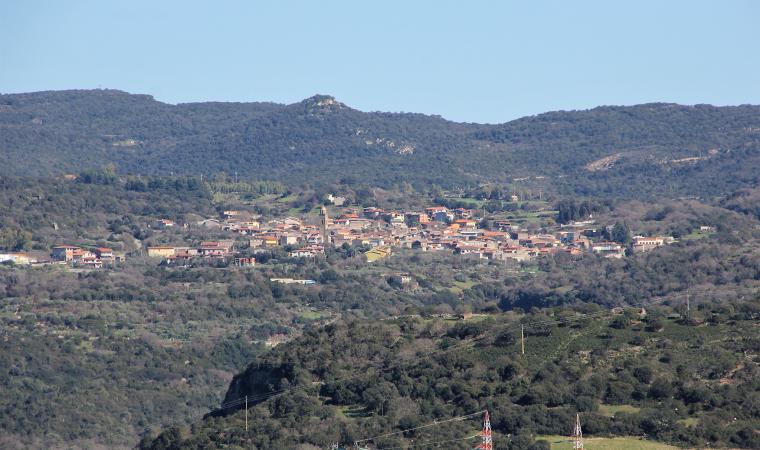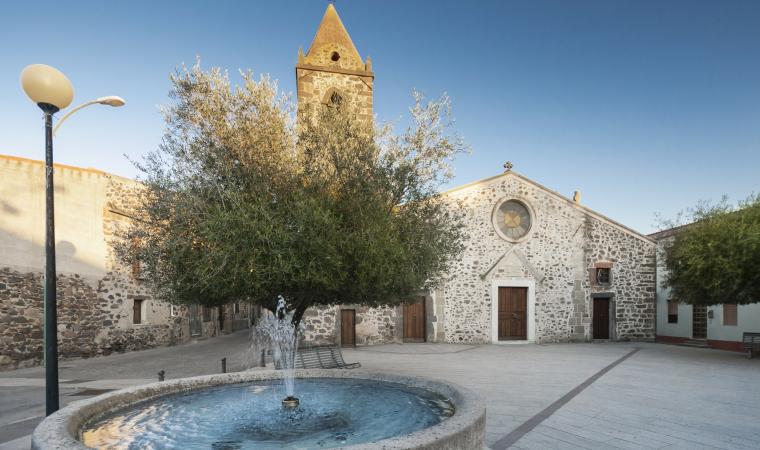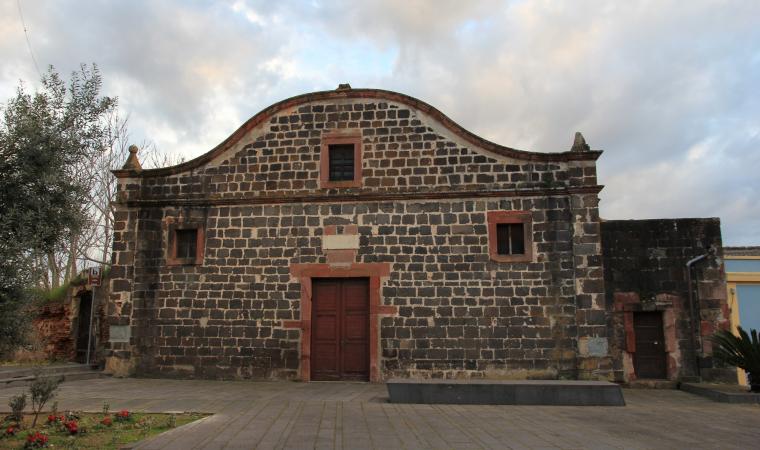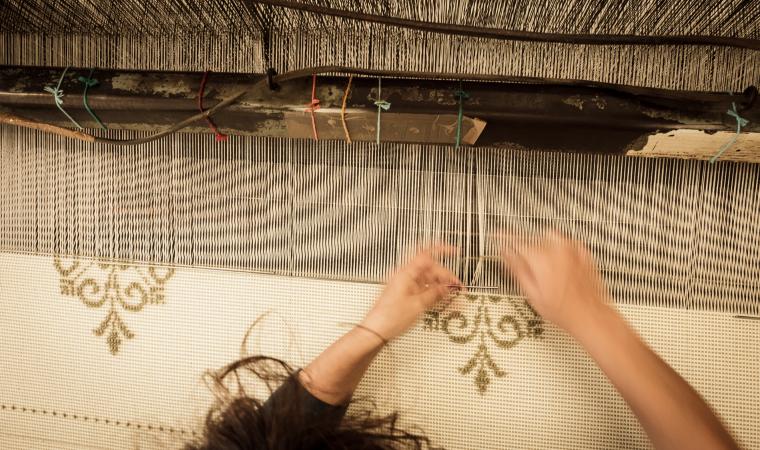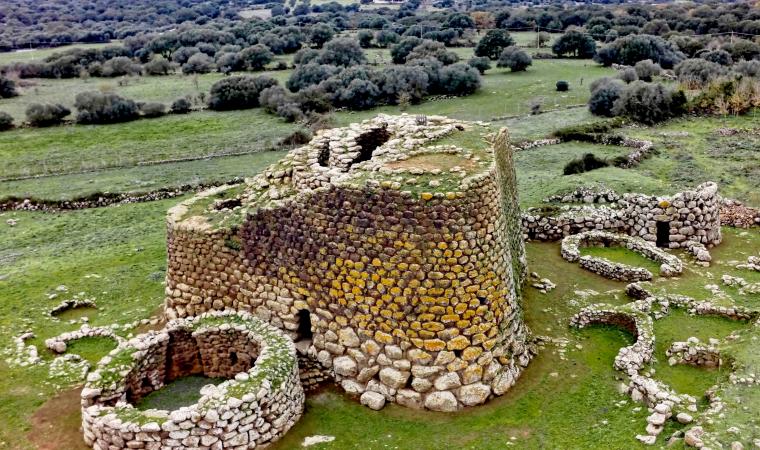Desde la Ruta Estatal (SS) 131, se gira en la intersección hacia Simaxis y se toma la Ruta Estatal (SS) 388. El santuario de San Lussorio está sobre una pequeña colina a unos 2 km del pueblo de Fordongianus.
Contexto ambiental
El lugar donde se erige el santuario de San Lussorio corresponde a un área de necrópolis, originalmente pagana, de la antigua ciudad de Forum Traiani, situada en la parte oriental de la calle romana "a Turre Karales".
Descripción
La identificación del lugar donde tuvo lugar el martirio del santo y donde fue construido el santuario dedicado a él, se debe, respectivamente, a la inscripción ahora tapiada en el lado sur de la iglesia románica de San Lussorio de Fordongianus y al "Passio Sancti Luxurii", cuyo autor conocía la cripta.
Es probable que ya en el siglo IV existiese una "memoria" en honor a Lussorio, en un ambiente hipogeo existente, probablemente utilizado con anterioridad para fines funerarios o cultuales. A esta vivienda rectangular semi-hipogea se añadió al oeste un pequeño ábside, mientras que en el lado norte se construyó una habitación cuadrada en cuyo centro se ubicaba el monumento funerario, cuadrangular, sobre una fosa de tierra que se cree es la tumba del mártir. Alrededor de la sepultura de Lussorio, se construyó un deambulatorio en forma de U a través del cual los peregrinos visitaban el lugar santo.
La estructura martirial tardoantigua fue ampliada en la época vandálica tardía o en el primer período bizantino, añadiendo un ambiente con ábside y una mensa de altar. En la primera mitad del siglo VII, la estructura cayó en ruina y, en la fase de reestructuración, se construyó una nueva aula de culto, a la que pertenecía también una pila bautismal, probablemente atribuida a un pequeño baptisterio. Aún se pueden ver, bajo el suelo de la iglesia románica, los restos del edificio bizantino.
La iglesia románica de San Lussorio fue construida con bloques de vulcanita a principios del siglo XII. Presenta una planta de una sola nave con bóveda de cañón y ábside al este. De esta primera estructura se conserva actualmente solo el lado norte y el ábside. A lo largo del basamento se insertan elementos escultóricos con figuras antropomorfas.
La cubierta original y el muro sur se derrumbaron. Su reconstrucción se realizó entre 1250-70 y se decidió implementar una cubierta de madera que reemplazó a la lítica anterior. La fachada fue reconstruida en la época aragonesa, donde destaca el portal gótico-catalán.

